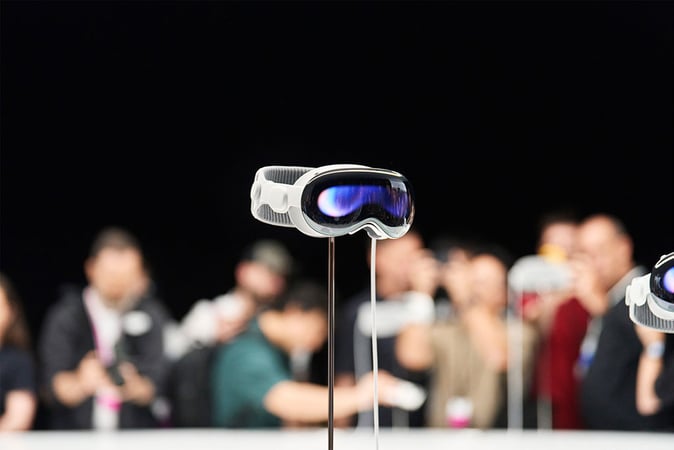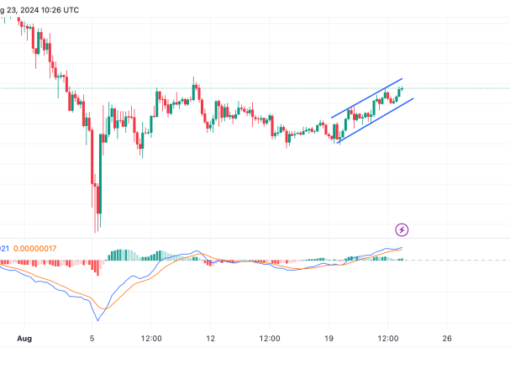Apple and Meta will be taking the battle on the frontier of mixed-reality headsets. Here’s a look into how each of the devices – Apple Vision Pro and Meta Quest 3 – compare with each other.
Mixed Reality, AR, and VR is the new battleground for tech giants to compete with each other. While Facebook parent Meta has been in the game for a while, Apple just made a big bang entry into the space by unveiling its Apple Vision Pro during the WWDC 2023 event’s opening day on Monday, June 5.
Apple’s first mixed-reality headset will be available in early 2024. However, it will set the competition straight up with the Meta Quest 3 headset planned for launch later this year. Meta made the announcement for Quest 3, just two days before Apple did it.
The Meta Quest 3 will be a successor to Quest 2 and will operate without a PC, smartphone, or console. It will have a 40% slimmer body with high-end display resolution, powerful graphics, and much more. The Meta Quest 3 will directly compete with the Apple Vision Pro. Let’s take a look into how these two headsets pitch against each other on different verticals.
Design and Hardware
The Apple Vision Pro is very much in line with Apple’s existing design language with curved edges snugly strapping to your face. It certainly looks like a premium product from the range of Apple’s offerings.
The Apple Vision Pro is a special device that has many cameras and sensors. It can do more than just show virtual reality things in front of you. It also has a screen on the outside that lets other people see your eyes and facial expressions while you wear it. This is different from other virtual reality and augmented reality headsets that exist in the market.
With the Apple Vision Pro, you can control everything using your fingers, hands, and voice commands. Apple won’t give you a separate controller or wand to use with it. But if you want to play games from Apple Arcade, you can connect a Bluetooth controller. And if you need to get work done, you can use the Magic Keyboard and Magic Trackpad with the headset.
On the other hand, the Meta Quest 3 will be Meta’s first take on mixed-reality headsets. Thus, unlike Quest 2, it will offer a full-color pass-through. The Quest 3 will be 40% slimmer than its predecessor and will have external cameras and a depth sensor to enable full-color augmented reality passthrough.
The Quest 3 comes with improved motion controllers designed specifically for games and immersive apps, in addition to supporting finger and hand gestures. This feature could be a significant advantage in terms of content, as explained in more detail below.
Display
The screens inside the Apple Vision Pro are super clear, with a resolution that’s even better than 4K for each eye. Apple hasn’t given us the exact details, but they claim the screens have over 23 million pixels, giving you a really sharp image.
As for Quest 3, we don’t have specific information about how clear its screen is yet. Meta, the company behind Quest, says it’s sharper than the Quest 2, which had a resolution of 1,832 x 1,920. However, a hands-on review by Bloomberg suggests that the Quest 3 doesn’t look much sharper than the Quest 2 in real-world use. We’ll have to wait and see for a direct comparison between the two.
Power and Battery
The Apple Vision Pro uses a powerful M2 processor, which is the same kind used in recent Mac computers. It also has a special R1 chip that handles the data from the cameras and sensors. On the other hand, the Meta Quest 3 is expected to use the Snapdragon Qualcomm XR2 chip, which is made specifically for devices like this, but it’s based on smartphone chips. Meta says the Quest 3 will have double the graphics performance compared to the Quest 2, but it might not be as powerful as the Vision Pro.
The Vision Pro doesn’t have its own built-in battery. Instead, it has a separate pack that you can plug in, and it gives you around two hours of use. You can easily carry the pack in your pocket or keep it nearby while you’re sitting. Alternatively, you can use a wall plug for unlimited use.
Also, there’s no info currently on the battery life of Quest 3. But the Quest 2 can be used for up to three hours on a full charge. Additionally, there’s a special Elite Strap available for the Quest 2 that includes an extra battery pack, doubling the usage time. Meta has yet to reveal how the Quest 3 compares in terms of battery life.
Software and Content
Software and content will be a major differentiator between the Apple Vision Pro and the Meta Quest 3. Apple has projected its Vision Pro as a spatial computer for entertainment and productivity, but not a gaming destination. It will run the Apple Arcade games on the Visison Pro’s floating, flat screen and could have new VR and AR games running for it. However, Apple hasn’t talked on this much, so far.
With the Apple Vision Pro, you can use popular apps like FaceTime and Zoom. It has a special 3D camera that can create a digital version of yourself called a “Persona.” This digital persona reacts in real time based on your actions, making the experience more immersive and connecting your physical and digital worlds. The 3D camera can also take photos and videos that have depth, which is a really cool feature.
On the other hand, the Meta Quest platform already has many exciting VR games like Beat Saber, Resident Evil 4, Pistol Whip, and Superhot VR. These games will likely perform even better on Quest 3. Additionally, Meta has shown plans to create AR games specifically for the new headset.
Both the Apple Vision Pro and Meta Quest 3 can be used for various purposes. They can be used for work to access apps and websites, and also for watching movies and TV shows in virtual environments. However, there are some differences. The Apple Vision Pro can connect with iOS apps and a Mac, giving it access to a wide range of content. In contrast, Meta’s platform doesn’t have as many features and options available.
Pricing and Availability
The Apple Vision Pro will be priced at $3,499, which is higher than the expected range of $2,000 to $3,000. This high price means that it will mainly attract tech-savvy early adopters, which is typical for Apple.
On the other hand, Meta is targeting consumers with the main Quest line. The Quest 3 will start at $500, which is only one-seventh of the Vision Pro’s price. Currently, the Quest 2 is priced at $300. The Quest Pro, a more powerful version, is currently sold for $1,000 after originally being priced at $1,500.
Apple plans to release the Vision Pro early next year, while Meta intends to launch the Quest 3 later this year.
Bhushan is a FinTech enthusiast and holds a good flair in understanding financial markets. His interest in economics and finance draw his attention towards the new emerging Blockchain Technology and Cryptocurrency markets. He is continuously in a learning process and keeps himself motivated by sharing his acquired knowledge. In free time he reads thriller fictions novels and sometimes explore his culinary skills.




